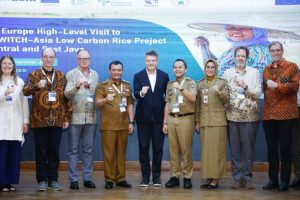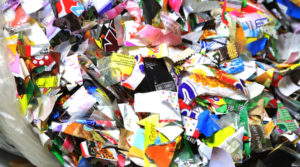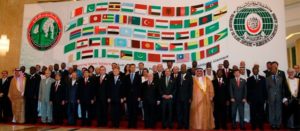Jakarta, MINA – Multilayer plastic packaging used in various products from detergent to instant coffee has posed serious and bigger danger to the environment due to small recycleability level, low value of post consumption waste compared to orher packaging like PET bottle.
The practicality of sachet packaging for everyday products often makes people forget themselves. The public has never thought how the disposable and then discarded packaging will pose another threat that is not comparable with the practicality it offers.
Therefore, manufacturers are encouraged to reduce the use of sachet packaging for consumption products, especially because the needs of the recycling industry for sachet packaging waste is also very low.
Deputy Chairperson of the Indonesian Plastic Recycling Association (ADUPI), Justin Wiganda, urged producers to reduce the use of sachet packaging for their products.
Also Read: 77 Years Since Nakba, Palestinian Population Grows Tenfold
“Because producers have to think about handling the product packaging waste after consumption. While this type of sachet or multilayer plastic waste has very low economic value. Interest in scavengers to scavenge sachets is very small, and the needs of the recycling industry for sachet packaging waste is also very low,” Justin said in Jakarta recently.
He said, with no interest in sachets by scavengers, the potential for sachets to be dumped into the river and into the sea is huge.
This is very worrying, because piles of sachet garbage in the sea will be very dangerous for animals that live in the sea and pollute the environment.
Justin said that the producer could be the party that was considered to be the most responsible for the sachet packaging waste, which although the shape was small, the number was very large.
Also Read: Indonesia Must Do More Than Evacuate, Gaza Needs Us to Act Now
Based on Greenpeace’s latest report entitled “Throwing Away The Future: How Companies Still Have It Wrong on Plastic Polls” Solutions “, as many as 855 billion sachets were sold in the global market this year.
Of that number, the Southeast Asian region holds a market share of around 50 percent. It is predicted that the number of sachet packages sold will reach 1.3 trillion in 2027. With this amount, if the sachet waste is not handled properly, it has the potential to become a waste that greatly pollutes the environment.
He added currently, the producers of plastic pellets have taken the initiative to use technology to make single materials to replace multi-material packaging.
“The shape is still multilayer, but using a single material. It aims as a substitute for sachets, “Justin said.
Also Read: The Recitation of Surah Al-Isra from Jakarta for Palestine
Until now the process of making single material packaging continues to be done while coordinating with many stakeholders.
“Because it must also be ascertained whether the product is suitable with the spec, and also whether it can function to hold food like the previous product. “Of course this takes a long process to be applied,” Justin said.
Justin then advised the producers of multilayer packaging users that the best solution for handling multilayer waste or sachets is to really reduce their use.
Also Read: The Importance of Environmental Awareness in Da’wah
Reducing sachet packaging on the one hand, said Justin, must be accompanied by an increase in people’s purchasing power.
“Why in developed countries the use of sachets is low because people’s purchasing power is also high. So it must go hand in hand between government programs to increase people’s purchasing power by reducing the use of sachets for consumption products,” said Justin.
He added that the government must be concerned with the handling of sachet waste because if it is continuously left without a solution, the problem of sachet packaging waste will become a big problem.
Because the multilayer plastic layer can not be decomposed. In addition, the needs of the recycling industry for sachet packaging is still very low.
Also Read: Interfaith Dialogue and the Middle East Conflict
“We don’t have definitive data, but you could say the number is less than one percent,” Justin said.
He stated that so far there were only members in the Surabaya area that had already recycled multilayer packaging.
“There, multilayer waste is made of raffia ropes, clothes hangers, and cast buckets. But this particular industry that accommodates multilayer waste is still very small. While the potential for waste generated from multilayer packaging is very large, it becomes very insignificant,” Justin said.
In line with Justin, Campaigner for Urban Greenpeace Indonesia, Muharram Atha Rasyadi, said that in 2030 the sachet should become a monolayer and encourage producers to invest in the use of recycling.
Also Read: Israel’s Underground Prison, Where Hamas and Hezbollah Fighters Are Held in Extreme Conditions
“Because multilayer plastic is difficult to recycle. The initiative to use recycled packaging has only come from the community, not from the manufacturer. What the producer needs to do is how this scheme and business needs to be done,” Atha explained.
Atha explained people’s consumption behavior was formed by industry. “Manufacturers always reasoned that they produce sachets because consumer purchasing power is sachets,” he explained.
While sachet or multilayer plastic waste has very low economic value. As a result, scavengers tend to ignore this type of waste and only collect PET type because it can be resold at high prices for the recycling industry.
17 Billion Packages
Chairperson of the Indonesian Scavenger Association (IPI), Pris Polly Lengkong, said that the sachets were less valuable to scavengers considering that no party had intended to establish a factory or recycling industry for sachets or multilayer packaging. IPI predicts that sachets of plastic waste will accumulate in 2027 if not immediately addressed.
Sri Bebassari, one of the environmental activists, said that every year 17 billion packages of instant noodle products are produced. This is a very difficult chore, so that after the product is consumed, 17 billion of the packaging waste is not thrown to the sea.
Sri emphasized that this is where producers must take responsibility for all the waste from the packaging of their products. “Referring to Article 15 of Law number 18 on Waste Management, producers must take responsibility for the waste they produce from the products they make,” said the Chairperson of the Indonesian Solid Waste Association (InSWA).
Therefore, Sri stated that the industry must have a program on what they would do with the packaging after it was finished.
Also Read: Exclusive Interview with Prof. El-Awaisi: Knowledge, the Key to the Liberation of Al-Aqsa Mosque
“Whatever the program can be made. Want to replace the packaging with packaging that is easily biodegradable, want to use a way to reuse it, or want to make a recycling program, please submit a proposal,” Sri said.
He asserted the Ministry of Industry must also be the front party that oversees the producer responsibility program for the waste they produce from products made.
“The requirements for making an after consumer program must be one of the main requirements when granting production licenses to producers. The Ministry of Industry must maintain this so that the industry takes part in thinking. Do not industry can only make products, then the problem is the waste of others who have to think. It can’t be like that. Producers must be responsible,” said Sri, who has been researching solid waste since 1980.(R/R1/RE1)
Mi’raj News Agency (MINA)
Also Read: Imaam Yakhsyallah: Nine Steps to Liberate Al-Aqsa and Palestine



























 Mina Indonesia
Mina Indonesia Mina Arabic
Mina Arabic